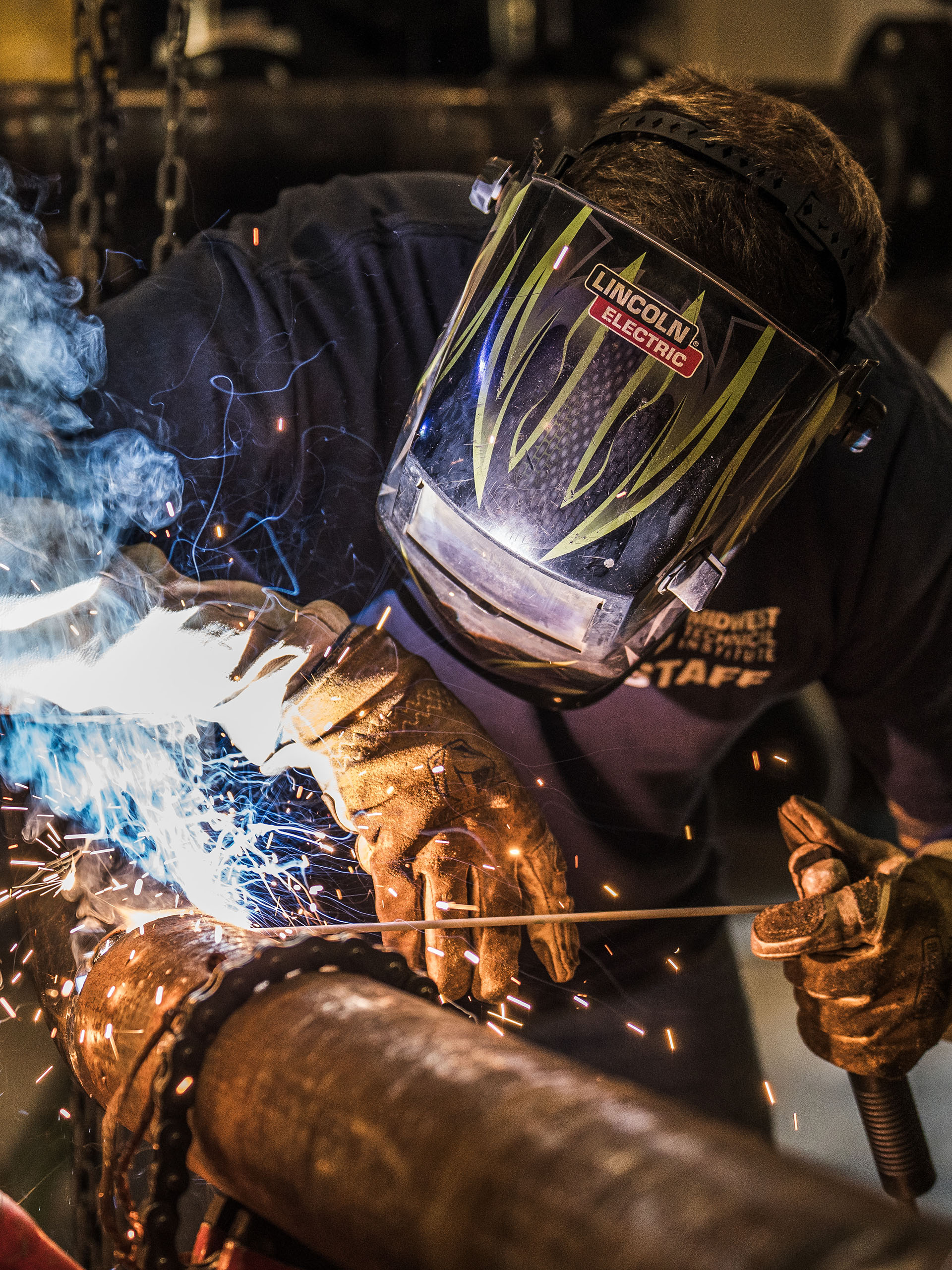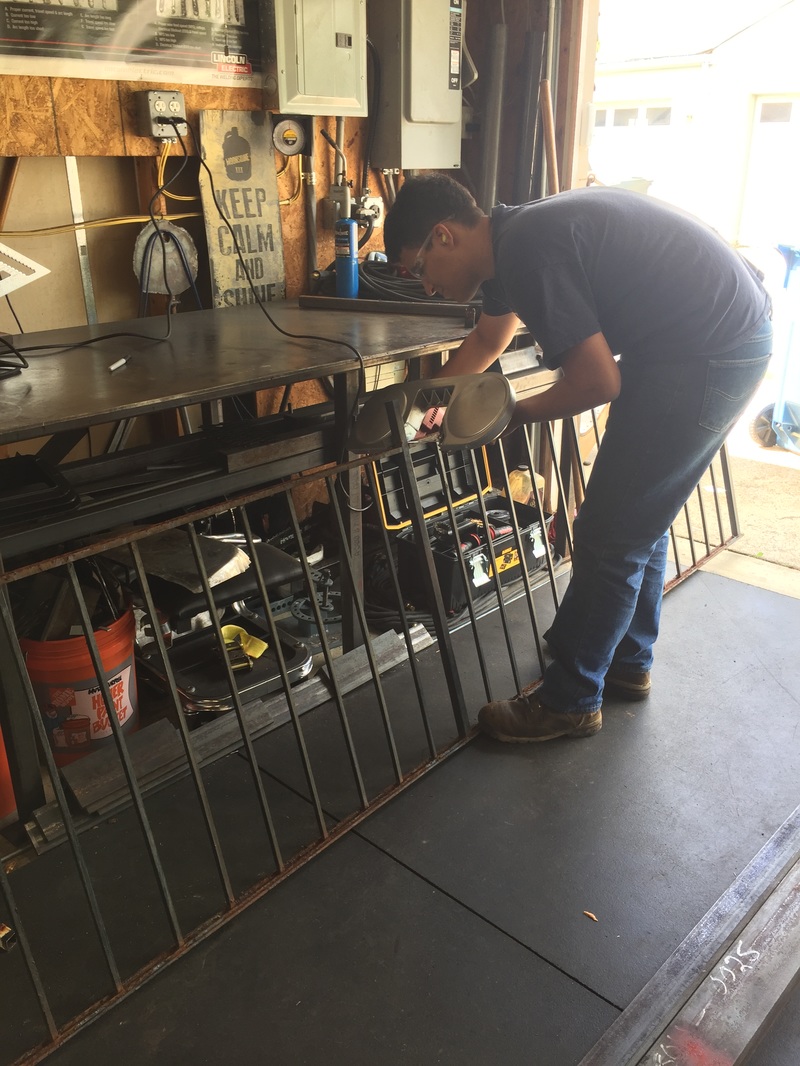Usual Welding Repair Work Issues and Exactly How to Address Them Efficiently
Welding repair services typically encounter a variety of issues that can endanger the honesty of the end product. Typical issues consist of insufficient infiltration, porosity, and misalignment, amongst others. Each flaw provides one-of-a-kind difficulties that call for specific approaches for resolution. Understanding these problems is vital for welders aiming to enhance their skills and results. This conversation will certainly explore these typical welding repair concerns and efficient approaches to address them.
Inadequate Penetration
Insufficient penetration happens when the weld metal fails to completely fuse with the base product, resulting in weak joints and possible architectural failings. This problem often originates from inadequate warm input, wrong electrode angle, or inappropriate welding speed. Welders might run into inadequate penetration because of a miscalculation of the essential specifications for a certain product density or type. Additionally, contamination on the base product's surface can prevent reliable bonding, intensifying the trouble. To deal with insufficient penetration, welders must guarantee suitable settings on their equipment and maintain a clean work surface. Regular assessment of welds is advised to identify any shortages early, permitting timely improvements and the prevention of jeopardized architectural honesty in bonded settings up.
Porosity
Porosity is an usual problem in welded joints that manifests as tiny gas bubbles caught within the weld steel. This defect can jeopardize the honesty of the weld, causing minimized toughness and potential failure under tension. Montana Mobile Welding and Repair Welding. Porosity typically occurs from contamination, moisture, or incorrect welding methods, which enable gases to leave into the molten weld swimming pool. To address porosity, welders must guarantee correct surface area preparation, preserve a tidy workplace, and make use of suitable welding specifications. Additionally, selecting the ideal filler material and protecting gas can minimize gas entrapment. Routine inspection and testing of welds can aid recognize porosity early, assuring timely restorative activities are taken, therefore maintaining the high quality and integrity of the welded structure
Imbalance
Imbalance in welding can develop from various variables, consisting of inappropriate arrangement and thermal expansion. Recognizing the origin triggers is crucial for reliable resolution. Numerous adjustment techniques are available to realign parts and guarantee structural honesty.
Reasons for Imbalance
Welding imbalance frequently stems from a selection of underlying concerns that can endanger structural honesty. One primary cause is incorrect fit-up of elements before welding, which can cause spaces and unequal surface areas. Variants in thermal growth throughout the welding procedure can also cause distortion, particularly if the materials being signed up with have various coefficients of expansion. In addition, insufficient fixturing and securing might stop working to hold elements safely in area, resulting in movement throughout welding. Improperly kept tools, including welding equipments and devices, may present incongruities in the weld bead, further contributing to imbalance. Driver mistake, stemming from not enough training or experience, can also play a substantial duty in developing misaligned welds.

Improvement Techniques Offered
Dealing with imbalance successfully needs a combination of restorative strategies tailored to the specific issues at hand. One common approach is making use of components or jigs to hold elements in the appropriate setting during welding, making sure constant placement. Furthermore, pre-heating the products can help decrease distortion and boost fit-up. For considerable misalignment, mechanical realignment methods, such as utilizing hydraulic jacks or clamps, can be employed to remedy the setting before welding. Post-weld heat therapy may also be necessary to ease stress and anxieties triggered by imbalance. Mindful inspection and change during the setup phase can prevent misalignment problems from ending up being significant issues, advertising a smoother welding process and enhancing overall architectural honesty.
Distortion
Distortion is a common obstacle in welding that can emerge from different aspects, consisting of unequal cooling and heating. Understanding the sources of distortion is crucial for implementing reliable avoidance strategies. Resolving this issue not just boosts structural stability yet additionally boosts the total high quality of the weld.
Reasons for Distortion
When based on the intense warmth of welding, products typically undertake adjustments that can cause distortion. This phenomenon mostly emerges from thermal expansion and tightening throughout the welding procedure. As the weld area warms up, the material increases; upon cooling, it gets, which can develop interior stresses. Furthermore, unequal home heating across a workpiece can intensify these anxieties, causing bending or flexing. The kind of product additionally plays a considerable function; metals with differing thermal conductivity and coefficients of expansion may react differently, resulting in unpredictable distortions. Inadequate joint layout and insufficient fixturing can contribute to misalignment during welding, boosting the probability of distortion. Comprehending these causes is vital for reliable welding repair and prevention techniques.
Avoidance Techniques
Efficient avoidance strategies for distortion during welding concentrate on controlling warm input and making sure correct joint layout. Keeping a regular warm input assists to minimize thermal expansion and tightening, which can result in distortion. Utilizing methods such as preheating the workpiece can additionally minimize the temperature level gradient, promoting consistent home heating. In addition, selecting suitable joint layouts, such as T-joints or lap joints, can boost stability and reduce stress concentrations. Executing appropriate fixturing to safeguard the work surfaces in location better help in maintaining positioning during the welding procedure. Finally, staggered welding series can disperse warm a lot more equally, preventing local distortion. By applying these strategies, welders can significantly lower the chance of distortion and improve the general quality of their welds.
Cracking
Fracturing is a typical issue run into in welding repairs, usually resulting from different factors such as improper air conditioning prices, material selection, or insufficient joint preparation. The incident of cracks can significantly jeopardize the honesty of the weld, bring about prospective failings throughout procedure. To address this issue, welders must initially assess the origin, guaranteeing that materials work and properly chosen for the particular application. Furthermore, controlling the cooling price during the welding process is vital; fast cooling can generate stress and bring about cracking. Proper joint design and prep work likewise add to decreasing the danger. Carrying out these techniques can improve weld high quality and durability, inevitably reducing the chance of cracking in completed weldments.

Insufficient Combination
A substantial problem in welding fixings is incomplete fusion, which happens when the weld metal does not properly bond with the base product or previous weld passes - Belgrade Welding. This flaw can bring about weak points in the joint, potentially endangering the honesty of the welded structure. Aspects adding to incomplete combination include insufficient heat input, inappropriate welding technique, and contamination of the surface areas being signed up with. To address this problem efficiently, welders ought to guarantee appropriate pre-weld cleaning and surface prep work, as well as change their welding criteria to achieve sufficient infiltration and blend. Normal evaluation during the welding process can likewise aid recognize incomplete fusion early, the original source enabling timely corrective procedures to boost the total high quality of the weld
Overheating
While welding repairs can improve structural honesty, overheating provides a substantial difficulty that can result in product deterioration. Too much warmth during welding can modify the mechanical buildings of metals, leading Get More Info to decreased toughness, boosted brittleness, and bending. This phenomenon is specifically vital in high-stress applications where architectural reliability is critical. Identifying overheating can include aesthetic assessments for discoloration or distortion, as well as monitoring temperature level throughout the welding process. To reduce the dangers associated with getting too hot, welders need to employ appropriate strategies, such as regulating heat input, changing traveling speed, and using suitable filler materials. In addition, carrying out pre- and post-weld warmth treatments can aid recover material residential or commercial properties and boost the overall quality of the fixing, ensuring long-lasting efficiency and safety and security.
Frequently Asked Inquiries
What Are the Usual Signs of a Welding Flaw?

How Can I Check My Welds for High quality?
To test welds for quality, one can use visual evaluations, ultrasonic testing, and radiographic techniques. Each technique guarantees structural stability, determines defects, and verifies adherence to specified requirements, eventually improving the integrity of the welded joints.
What Safety Precautions Should I Take While Welding?
When welding, one need to prioritize safety and security by putting on proper personal safety devices, making sure proper air flow, securing combustible products away, keeping a clean work area, and being conscious of surroundings to avoid accidents and injuries.
Can I Repair a Weld Without Redoing the Entire Joint?
Fixing a weld without remodeling the entire joint is possible, relying on the damage (Montana Mobile Welding and Repair Belgrade Fabrication). Techniques such as grinding, adding filler material, or making use of a welding process can effectively attend to particular imperfections while protecting the bordering framework
What Devices Are Important for Effective Welding Repairs?
Important devices for efficient welding repair work include a welding maker, cable brush, grinder, safety gear, clamps, and filler products. Each tool plays a crucial function in making certain high quality and safety throughout the repair service process. Porosity commonly occurs from contamination, dampness, or improper welding methods, which permit gases to run away into the molten weld pool. Poorly conserved equipment, consisting of welding makers and tools, might introduce inconsistencies in the weld bead, further adding to misalignment. When subjected to the extreme heat of welding, materials often undergo adjustments that can lead anchor to distortion. Splitting is an usual issue encountered in welding fixings, usually resulting from different aspects such as improper cooling prices, material option, or inadequate joint prep work. A substantial concern in welding repair work is insufficient fusion, which happens when the weld metal does not appropriately bond with the base product or previous weld passes.
Comments on “Essential weld defect solutions from Montana Mobile Welding and Repair Belgrade Welding”